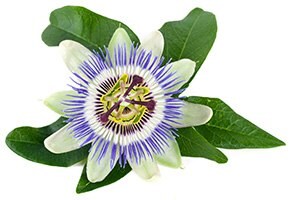HPTLC for Passiflora incarnata
Tiên Do, Melanie Broszat, Matthias Nold

In previous articles we presented HPTLC (High- Performance Thin-Layer Chromatography) applications for a series of medicinal plants, such as Ginkgo (Analytix 5/2016), Hypericum (Analytix 1/2017) or Ginseng (Analytix Reporter Issue 2/2018). With this article, we continue this series with an application note for passion flower, to further demonstrate the effectiveness of HPTLC for fingerprints of botanicals. Our comprehensive offering of analytical reagents and standards includes all consumables (TLC/HPTLC plates, solvents, analytical standards and extract reference materials) used for this application.
Passiflora incarnata (passion flower) has been familiar to native Latin Americans for many centuries. The Spanish physician Monardes discovered it in 1569 in Peru. In Europe, passion flower was long used as an ornamental plant. In the second half of the last century, passion flower entered the field of homeopathy. In low potencies it is used as a sedative, and also has a cardiotonic and nerve calming effect. Passion flower is primarily found in the tropical rainforest, and for production of the herbal drug, it is mainly grown in India, US (Florida), Italy and Spain.
TLC fingerprint analysis is stipulated for identification of herbal drugs in most pharmacopoeias. In the passion flower herb, several glycosylated flavonoids are present. After derivatization with Natural Product reagent, they can sensitively be detected via the HPTLC fingerprint analysis shown in this article.
Results & Discussion
With the demonstrated method according to the HPTLC Association,1 a rapid identification of Passiflora incarnata by HPTLC fingerprint analysis is possible. Reference substances are applied as a system suitability test to qualify the results (RF values have to be in the specified tolerance window of ∆RF 0.025). Furthermore, reference substances of glycosylated flavonoids present in Passiflora incarnata are applied.
System suitability test
(under UV 254 nm, ∆RF 0.025; minheight 0.010 AU)
- Isoorientin (0.15 mg/mL): a quenching zone at RF ~ 0.041
- Isovitexin (0.15 mg/mL): a quenching zone at RF ~ 0.046
For our tests, a reference extract from HWI (track 19) was used. Zones present in the extract corresponded in color and position to those of the standards vicenin-2, schaftoside, isoorientin, isovitexin, orientin, and vitexin. The obtained HPTLC fingerprint was similar to the Passiflora herb chemotype isovitexin.1
HPTLC fingerprint analysis allows a rapid identification of many samples in parallel without a time-consuming and cost-intensive sample preparation. Evaluation by visual comparison is simple and convenient. HPTLC can be considered the method of choice for identity testing of plant materials.





Figure 1: Chromatograms under UV 254 nm (A), UV 366 nm (B) and white light (C) prior to derivatization, and under UV 366 nm after NP/PEG derivatization (D), and white light after NP/PEG derivatization (E).
Tracks: 1: SST isoorientin, isovitexin (with increasing RF); 2: vicenin-2 (03980585, lot HWI01702); 3: schaftoside (42925, lot BCBP3755V); 4: vitexin-2’’-o-rhamnoside (00660585, lot HWI01189-1); 5: hesperidin (50162, lot BCBT7241); 6: isoorientin (78109, lot BCBR4394V); 7: chlorogenic acid (00500590, lot HWI01268-1); 8: swertisin; 9: isovitexin (67135, lot BCBN8928V); track 10: hyperoside (00180585, lot HWI00286-2); 11: orientin (03810585, lot HWI01050-1); 12: vitexin (49513, lot BCBR8611V); 13: scopoletin (38332, lot BCBS2552V); 14: umbelliferone (54826, lot BCBR1694V); 15: apigenin (01760595, lot HWI00086-1); 16: chrysin (95082, lot BCBP9460V); 17: oleanolic acid (42515, lot BCBT0832); 18: α-terpineol (04899, lot BCBS7535V); 19: Passiflora incarnata Extract Reference Material (05085001, lot HWI01280).
Materials
Reference
To continue reading please sign in or create an account.
Don't Have An Account?